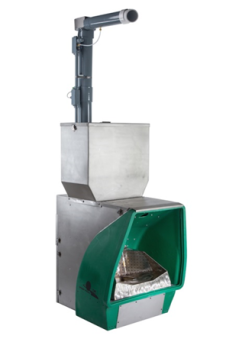
Project
On farm measurement of enteric methane emission
The experimental feed unit of Dairy Campus implemented a GreenFeed system, a new technique enabling measurement of enteric methane under practical conditions in which dairy cows are free to move around and eat at will. Currently a Dairy Campus Innovation Fund project is running to optimize the use of the GreenFeed and test our experimental design in a Proof of Principle experiment. The GreenFeed will be used in feasibility studies of several feed strategies to decrease the CO2 footprint of Dutch milk.
The contribution of dairy production to global warming is substantial. The CO2 footprint of the dairy production chain consist for approximately 40% of enteric methane (CH4) emissions. Substantial mitigation of enteric CH4 emissions is possible by feed management and feed strategies, including the use of methane reducing feed additives. The reduction potential of these feed additives is high. However, the development and implementation of feed strategies, with or without using feed additives, is difficult due to a lack of data for emissions under practical conditions (on farm).
Climate neutral development
The Dutch dairy chain targets a 20% reduction in greenhouse gasses by 2020. The Dairy Campus Innovation Fund project GreenFeed PoP (Proof of Principle) will contribute to the ‘licence to produce’ of the Dutch dairy chain. It provides information on the effect of different feed strategies under practical conditions and thus providing an action perspective for both farmer and dairy chain in reducing the CO2 footprint.

New methane measurement technique
Dairy Campus purchased a technology that has been independently verified in experimental settings. The Greenfeed system (C-Lock, Inc., Rapid City, SD) has the appearance of a regular concentrate box and uses state of the art techniques to measure enteric methane emission at each visit of up to 30 individual animals. The Dairy Campus Innovation Fund project is testing an experimental design in which the GreenFeed is used in combination with the Dairy Campus RIC-system to measure individual feed intake.
Experimental design
Optimization and testing of the Dairy Campus experimental design consists of an experiment with two groups of 40 animals fed diets differing in methane emission. The difference in enteric methane emission is induced by feeding an additive with a scientific proven and consistent effect (nitrate). The results will be used for a proof of principle.
